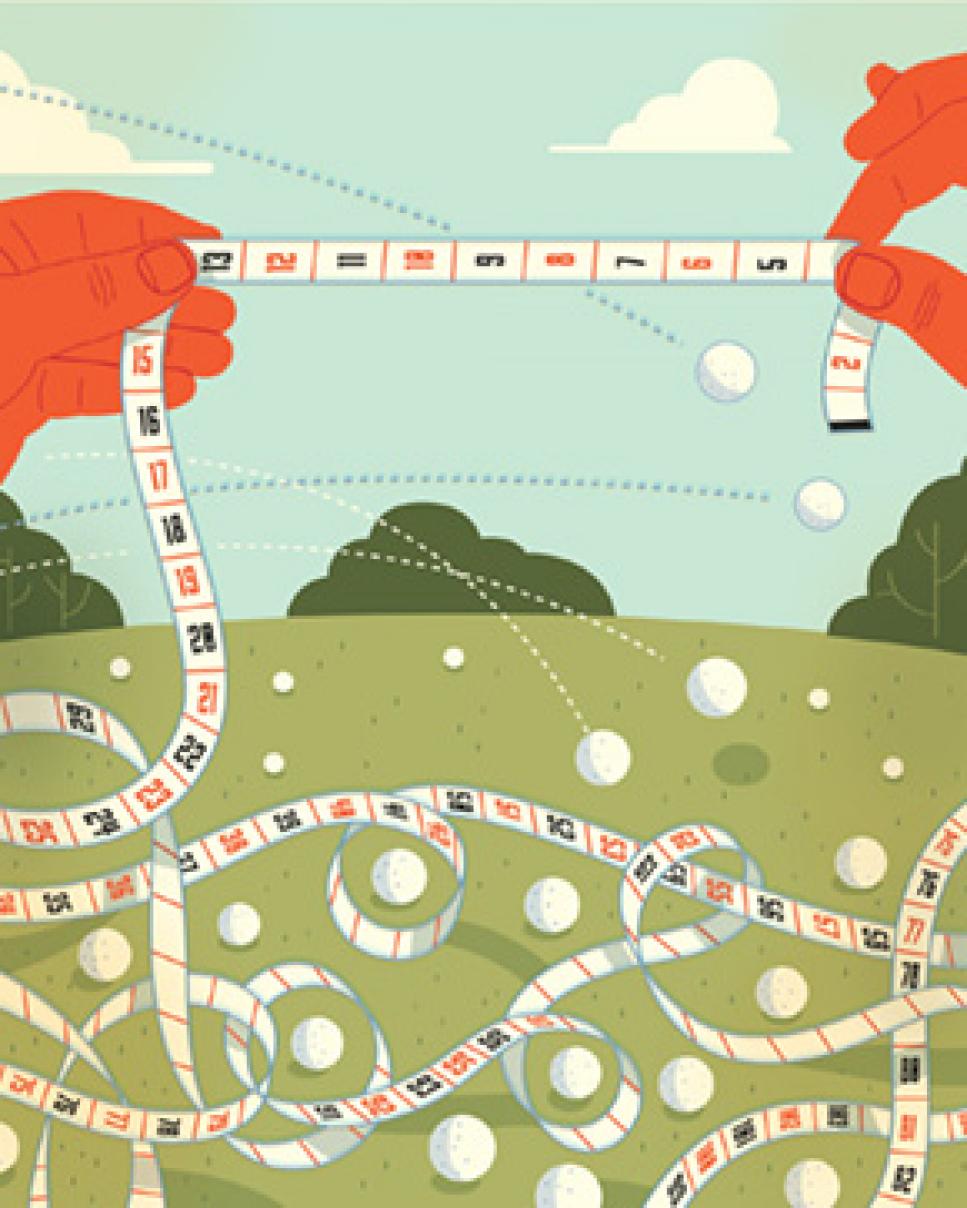Hot List
Why a Driver Fitting Matters

Jeff Flagg personifies potential. The former minor-league baseball player got hooked on golf long-drive competitions a few years ago. He won the 2014 RE/MAX World Long Drive Championship, earning a spot in the final with a swing speed of 150 miles per hour and a drive of 463 yards (37 mph faster and 170 yards farther than the average PGA Tour player).
That's a peek at the game's future, but Flagg says a key to achieving those numbers has been refining his driver and swing on a launch monitor. "I won by 13 inches, so shifting the weight in the head, tweaking the settings, that adjustability contributed to those 13 inches," he says. Flagg's methods for reaching his potential can work for the rest of us, too.
Trouble is, average golfers aren't taking advantage of the game's increasingly sophisticated technology. Our exclusive player test revealed that golfers across all ability levels are leaving an average of 23 yards on the table.
Golf Digest studied how 150 average golfers hit their drivers. We measured swing speeds from 60 miles per hour to 130, and handicaps from 0 to 36. For the test, we used a Foresight Sports GC2 launch monitor that measured swing speed, ball speed, launch angle, spin rate and distance. We also asked dozens of America's 100 Best Clubfitters to share similar launch data from their customers. What we found is that the average golfer launches the ball too low, generates too much backspin and doesn't make solid contact with the center of the face. Specifically, we're not hitting it as far as we should given our respective swing speeds.
Nine out of 10 golfers in our test hit the ball short of what we estimate their potential to be. What's a good estimate for your driving-distance potential? If you're not hitting it 2.5 to 2.7 times your clubhead speed, you need a better-fitting driver, a lesson, or both. This means if your swing speed is 75 miles per hour, you have the potential to hit your drive at least 185 yards. If your swing speed is 100 mph, your distance potential could be as high as 270 yards. But most golfers are woefully short of their potential. Two-thirds of the players in our survey weren't within 15 yards of their potential driving distance, and half of those were 30 or more yards short of optimum.
Here are the keys to more distance, and all of them are easily understood by working with a clubfitter who uses a launch monitor to analyze your swing and ball flight.
First, there's how fast the ball leaves the clubface. Ball speed is dictated by your swing speed, but golfers can maximize their potential ball speed by contacting the center of the face more consistently. All launch monitors measure how efficient the relationship is between clubhead speed and ball speed, or what's known as "smash factor." Generally, the maximum for that ratio is 1.50, so the closer you can get to that number, the fewer yards you'll be wasting. But the golfers in our test too often were miles short. Eighty percent were below an ideal smash factor of 1.47, and 40 percent were at 1.40 or less.
The second ingredient is launch angle, or the upward angle of the ball as it leaves the clubface. In our test, more than a third of the golfers had a launch angle below 11 degrees. Unless your swing speed is 120 miles per hour, you should be striving for a 13-degree launch angle or higher. Any lower, and the ball won't stay in the air long enough to maximize total distance.
The third ingredient for distance is optimizing the backspin rate once the ball leaves the clubface. To max your distance, you want to launch shots relatively high with low spin. Off-center strikes at a low launch angle often result in excessive spin: a perfect recipe for short hitting. Still, almost half of the golfers we tested had spin rates above 3,000 revolutions per minute. If you can get your rpm below 3,000, you'll be closer to the ideal of higher launch and lower spin.
Our data suggests that many golfers would benefit from more loft on their driver and perhaps a softer flexing shaft. But what we all really need is a quality driver fitting. With the feedback available from launch monitors and the increasing ability of good fitters to work with quality instructors, the right fitting can change your clubs and even your swing.
We're not talking major reconstruction. Simple things like shifting the ball forward in your stance, teeing it higher and swinging slightly up on the ball can dramatically change distance. A recent test by TrackMan, whose launch monitor is used on the PGA Tour, found that a swing speed of 90 miles per hour can gain about 30 yards by just swinging up on the ball.
Our study indicates those yards are easily within reach of average golfers. Plenty of fitters see those improvements every day, and not just for big hitters. "Players with a swing speed of 65 to 85 mph show the biggest loss as a percentage of distance if they don't optimize launch, spin and smash factor," says Dan Sueltz of D'Lance Golf in Colorado, a 100 Best Clubfitter.
With more varieties of drivers available, and with dozens of adjustments of loft, lie and face angle, as well as center-of-gravity locations—even within the same head—it's easier to optimize a club to any swing. A quality fitter can help you achieve your potential. It's what Jeff Flagg embodies these days, and he says the feeling reminds him of his baseball career.
"The contact felt pretty much the same as a 400-foot home run," he says. "It takes off and doesn't come down. It feels effortless." That's a feeling every golfer should have. And can have. Additional reporting by John Strege